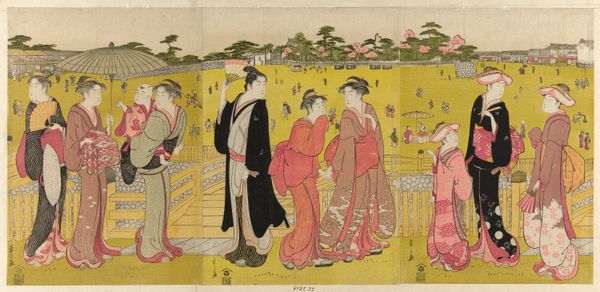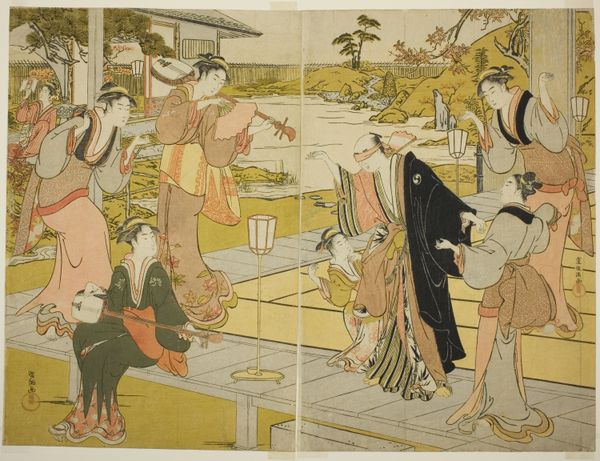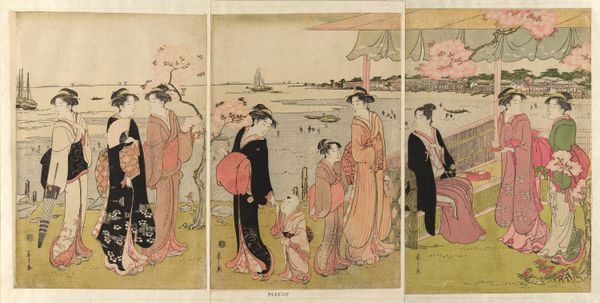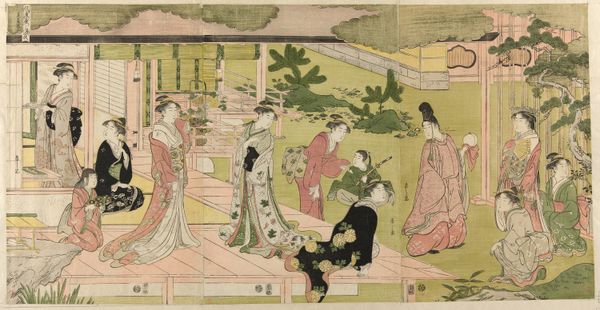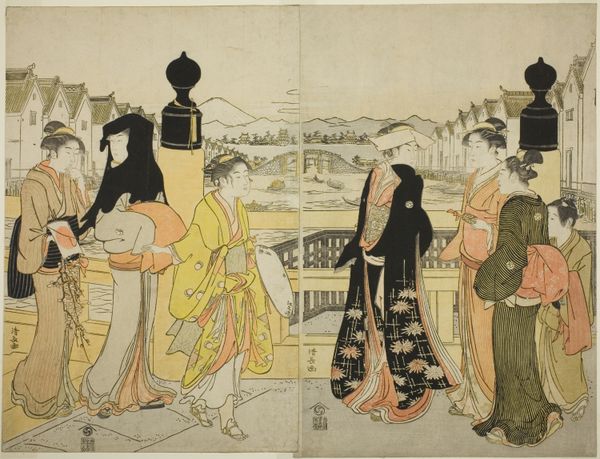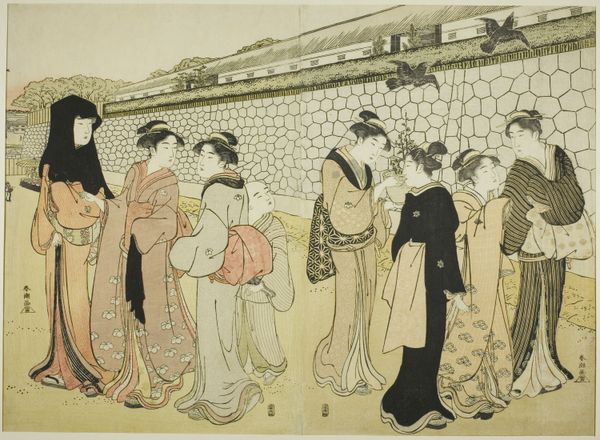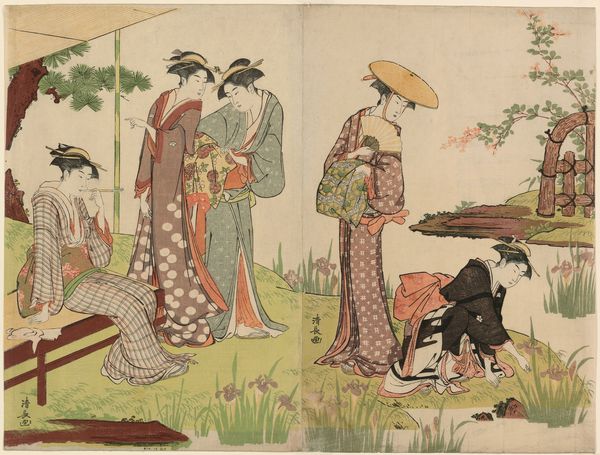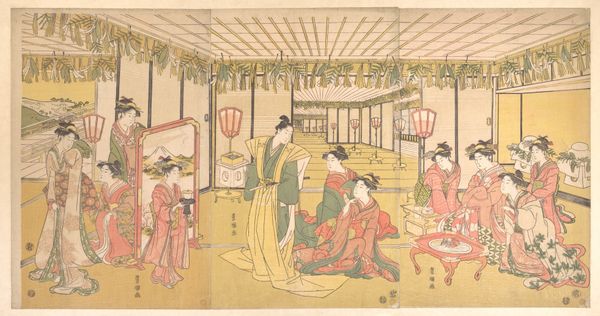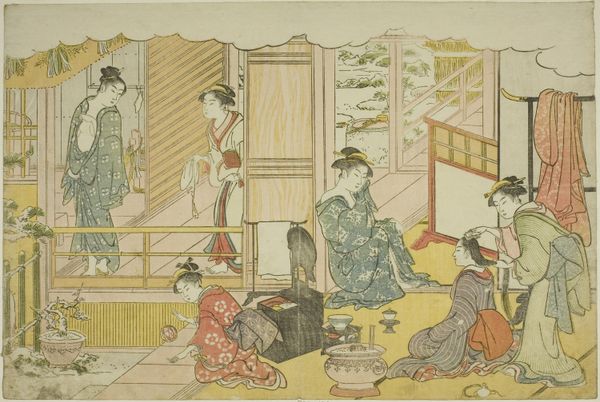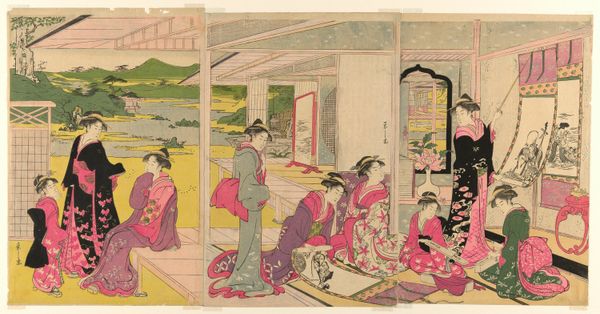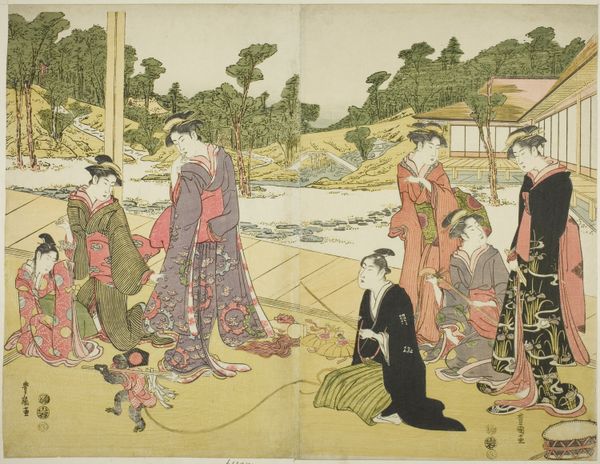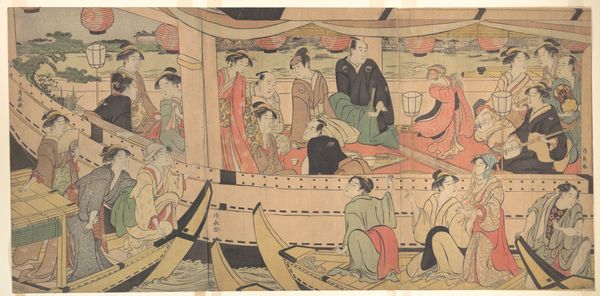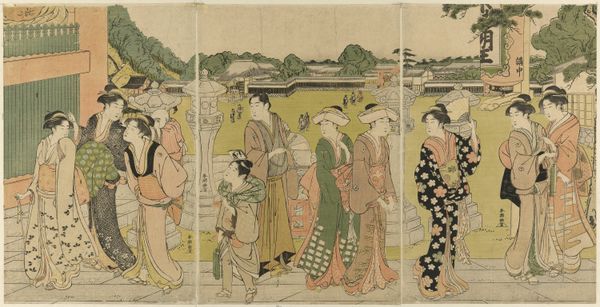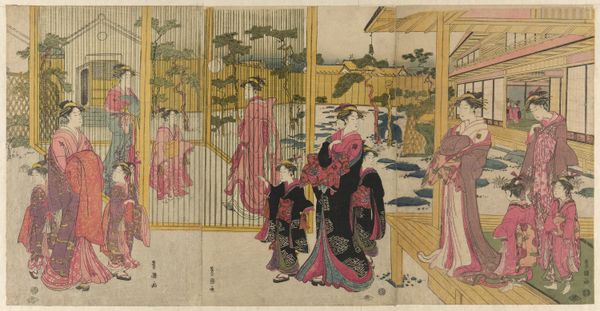
In a Pleasure House in Shinagawa (Shinagawa no rojo) n.d.
0:00
0:00
# print
#
asian-art
#
ukiyo-e
#
figuration
#
orientalism
#
genre-painting
Dimensions: 38.4 × 25.2 cm (right sheet); 38.8 × 25.5 cm (left sheet)
Copyright: Public Domain
This diptych, made by Chōbunsai Eishi, depicts courtesans in a Shinagawa pleasure house. The setting is suggested by the symbols of leisure: the sea view, the tea sets, and the elegant attire of the women. Consider the presence of the sea, a motif stretching back to antiquity, often representing both freedom and danger. In Japanese art, the sea can symbolize purification and the cyclical nature of life, much like the Greek concept of Okeanos, the world-ocean. This idea of cyclical existence is mirrored in the courtesans' beauty, which is transient, yet eternally captured in art. The subtle gestures of the figures—the bowed heads and the averted gazes—hint at complex social dynamics. These poses evoke a sense of melancholy, a deep-seated human condition that finds echoes in countless works across cultures. This emotional undercurrent, perhaps tied to our collective memory, engages us on a subconscious level, reminding us of the ephemeral nature of beauty and pleasure. The sea, like the turning wheel, embodies a continuous cycle of change, a rhythm that echoes through time and art.
Comments
No comments
Be the first to comment and join the conversation on the ultimate creative platform.
